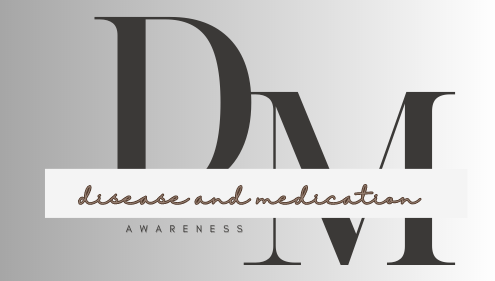What are Musculoskeletal Disorders (MSDs)?
Musculoskeletal Disorders encompass a diverse range of conditions affecting the musculoskeletal system. These can be acute (sudden onset) or chronic (long-term), impacting mobility, function, and overall well-being.
The musculoskeletal system, your body’s mechanical marvel, is responsible for movement, support, and structure. It comprises over 200 bones, providing a rigid framework. Muscles, numbering over 600, power movement and maintain posture. Ligaments and tendons act as connective tissues, binding bones and muscles together. Finally, cartilage cushions and protects joints, enabling smooth movement.
Musculoskeletal Disorders encompass a wide range of conditions affecting the musculoskeletal system. These disorders can appear from different factors, including:
- Injuries: Sudden impacts, falls, or overuse can cause sprains, strains, and fractures, impacting muscles, tendons, and bones.
- Overuse: Repetitive motions, awkward postures, and heavy lifting can lead to tendinitis, bursitis, and carpal tunnel syndrome.
- Degenerative Disease: As we age, the breakdown of cartilage in joints can cause osteoarthritis, leading to pain and stiffness.
- Autoimmune diseases: Conditions like rheumatoid arthritis involve the immune system attacking healthy tissues, causing inflammation in joints and surrounding structures.
Common Types of Musculoskeletal Disorders:
- Back pain: This widespread issue affects most individuals at some point in their lives, ranging from acute strains to chronic conditions.
- Neck pain: Poor posture, stress, and injury can contribute to neck pain, limiting head movement and causing discomfort.
- Arthritis: This umbrella term encompasses various conditions causing joint inflammation, pain, and stiffness.
- Osteoporosis: This progressive bone disease reduces bone density, increasing the risk of fractures.
- Tendonitis: inflammation of a tendon, often caused by overuse, leading to pain and tenderness at the affected site.
- Carpal tunnel syndrome: Compression of a nerve in the wrist, causing pain, numbness, and tingling in the hand and fingers.
- Fibromyalgia: A chronic condition causing widespread pain, fatigue, sleep disturbances, and cognitive difficulties.
Exploring the Causes of Musculoskeletal Disorders:
While the exact causes of various MSDs can differ, several contributing factors play a significant role:
- Repetitive motions: Performing the same movements repeatedly over time can strain muscles and tendons.
- Poor posture: Slouching or hunching can put undue stress on the spine and joints.
- Overexertion: Lifting heavy objects or engaging in strenuous activities without proper form can lead to injuries.
- Age: As we age, our musculoskeletal system naturally weakens, increasing susceptibility to MSDs.
- Genetics: Certain individuals may have a genetic predisposition to developing specific MSDs.

Symptoms of Musculoskeletal Disorders:
The presenting signs and symptoms of MSDs can vary depending on the specific condition and the affected area. However, some common symptoms include:
- Pain: This can range from a dull ache to sharp pangs, localized or radiating to other areas.
- Stiffness: Difficulty moving joints freely, especially in the morning or after prolonged sitting.
- Swelling: Inflammation in the affected area, causing visible puffiness or tightness.
- Weakness: Reduced muscle strength, impacting daily activities and functional abilities.
- Numbness or tingling: Loss of sensation or a pins-and-needles feeling, often associated with nerve compression.
Diagnosis and Treatment of Musculoskeletal Disorders:
Diagnosing MSDs often involves a combination of:
- Physical examination: Evaluating tenderness, swelling, range of motion, and other physical signs.
- Imaging tests: X-rays, ultrasounds, or MRIs may be used to visualize bones, joints, and soft tissues.
- Blood tests: Occasionally, blood tests may be necessary to rule out underlying conditions.
Treatment for MSDs depends on the specific diagnosis and severity. It can encompass various approaches, including:
- Rest and avoiding aggravating activities.
- Medication: Pain relievers, anti-inflammatory drugs, or medications specific to certain conditions.
- Physical therapy: Exercises and stretches to improve flexibility, strength, and range of motion.
- Occupational therapy: Learning techniques to perform daily tasks safely and efficiently.
- Surgery: In some cases, surgery may be necessary to repair damaged tissues or correct structural abnormalities.
Preventing Musculoskeletal Disorders:
While some MSDs are unavoidable due to age or medical conditions, adopting healthy lifestyle habits can significantly reduce your risk:
- Maintain good posture: Stand tall with shoulders back and core engaged, avoiding slouching or hunching.
- Engage in regular exercise: Aim for at least 150 minutes of moderate-intensity exercise per week to strengthen muscles and improve flexibility.
- Practice good ergonomics: Set up your workspace to avoid awkward postures and repetitive strain on specific muscle groups.
- Maintain a healthy weight: Excess weight puts additional strain on your joints, increasing the risk of MSDs.
- Listen to your body: Take breaks when experiencing discomfort, avoid lifting heavy objects awkwardly, and seek professional help if pain persists.

Conclusion:
Musculoskeletal disorders are prevalent health concerns, but understanding their causes, types, symptoms, and management strategies empowers you to take control of your well-being. By employing preventive measures, maintaining a healthy lifestyle, and seeking professional help when needed, you can minimize the impact of MSDs and live an active, pain-free life.
